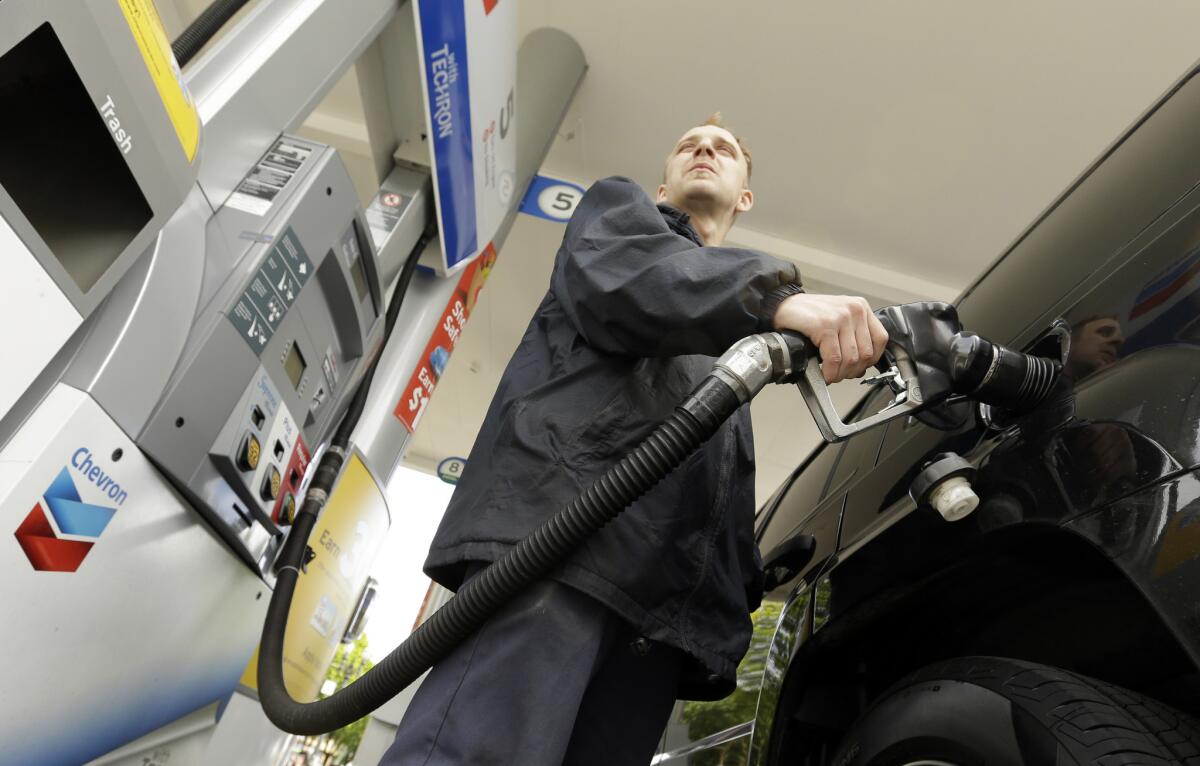Inflation increases slightly in April as energy prices remain low

Attendant James Lewis pumps gas at a station in Portland, Ore. on May 6.
- Share via
Reporting from Washington — Inflation increased slightly in April as energy prices remained low and costs for groceries, clothing and airfares declined, the Labor Department said Friday.
The consumer price index rose 0.1%, in line with economists’ forecasts, boosted by a big jump in medical costs.
It was the third straight monthly increase for the index after three months of declining prices, indicating that inflation is stabilizing.
But April’s figure was down from the 0.2% increases recorded in each of the previous two months.
And for the 12-month period through April 30, consumer prices declined 0.2%. The decrease was driven by a steep drop in energy prices, which fell 19.4% in the same period.
However, so-called core inflation, which excludes volatile food and energy prices, increased 0.3% in April, the largest rise since January 2013. The figure was up from 0.2% the previous month.
For the year ended April 30, core inflation was 1.8%.
Oil and gas prices have started increasing recently, so inflation should pick up in the coming months, which would set the stage for an interest rate hike later this year.
Chris Rupkey, chief financial economist at Union Bank in New York, said inflation, “if not rearing it’s ugly head,” has shown that it is back, which increases the likelihood that the Federal Reserve will raise interest rates soon.
Still, energy prices were down 1.3% in April, including a 1.7% decrease in gas prices. Fuel oil costs fell 8.4%.
Grocery prices dropped 0.2%, though that was offset by a 0.2% rise in restaurant prices to leave overall food costs unchanged in April.
Medical costs rose 0.7%, the biggest jump since January 2007, boosted by a 1.9% increase in hospital services.
Fed policymakers have said they need to see inflation increasing toward the central bank’s 2% annual target before they will hike the so-called federal funds rate, which has been near zero percent since late 2008.
The Fed uses a different inflation barometer based on personal consumption expenditures. That measure has been running higher than the consumer price index but still was up just 0.3% for the year ended March 30, the latest data available.
In minutes released Wednesday from the Fed’s April meeting, policymakers “generally anticipated that inflation would rise gradually” this year toward the 2% target as the labor market continued to improve and the temporary effects of low oil prices dissipated.
Fed officials are watching economic data closely and have indicated that a hike in the federal funds rate could come as early as June.
But minutes from the April meeting said that “many participants ... thought it unlikely that the data available in June would provide sufficient confirmation that the conditions for raising the target range for the federal funds rate had been satisfied, although they generally did not rule out this possibility.”
Follow @JimPuzzanghera on Twitter
More to Read
Inside the business of entertainment
The Wide Shot brings you news, analysis and insights on everything from streaming wars to production — and what it all means for the future.
You may occasionally receive promotional content from the Los Angeles Times.











